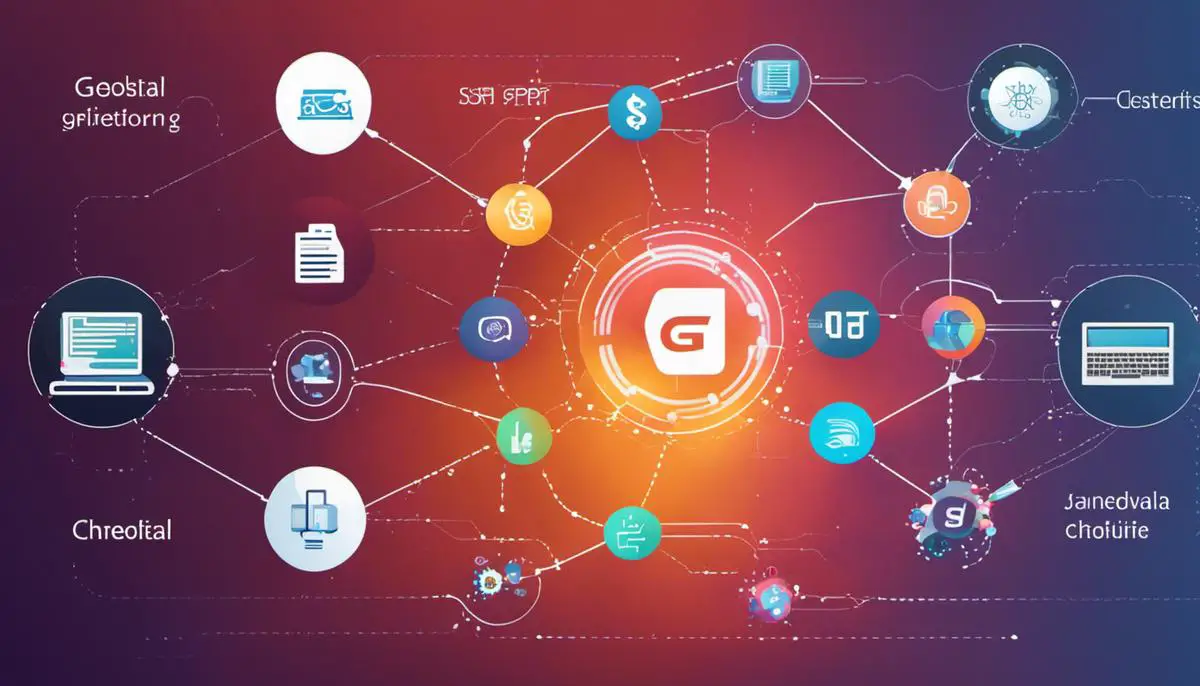The ubiquity of Artificial Intelligence (AI) has transformed our day-to-day lives, impacting everything from search engine responses to personal assistant apps. Within this sphere of AI, a game-changer known as the Generative Pretrained Transformer (GPT) has emerged, catapulting conversational interfaces, such as ChatGPT, to new heights.
This essay seeks to dive deep into the intriguing world of GPT and the concept of ‘jailbreaking’ or modifying its behavior, a practice that is typically synonymous with making firmware changes in smartphones. Through this discursive journey, not only will we unravel the intricate architecture of GPT and its multifaceted functions, but also scrutinize the pros and cons of jailbreaking such an AI system. Additionally, you’ll gain insights into the process of jailbreaking a GPT, equipping you with the necessary knowledge to tread this captivating yet challenging path
Understanding GPT (Generative Pretrained Transformer) and its Functions
Table of Contents
Artificial Intelligence (AI) has seen exponential growth in the past few years, with systems now able to comprehend human language like never before. One phenomenal example of this progress is Generative Pre-training Transformer (GPT), the cutting-edge AI model that’s changing the game. GPT’s prowess lies in its remarkable text-generating ability, making it a high point in Natural Language Processing (NLP) technology. This article will deliver a short foray into what GPT is and how it operates.
Fueled by OpenAI, GPT models have set a new benchmark in AI performances. These are essentially language prediction models, meaning they predict what text should come next given an input. GPT’s ability to generate human-like text is significant, from drafting emails to writing full research papers. Its prime functioning revolves around understanding context and predicting outputs that align with that context.
GPT’s heart lies in its structure: it’s a transformer-based model that uses layers of self-attention mechanisms. The transformer architecture disregards the sequential processing of the text and instead, allows the model to consider every word in the sentence simulatenously. This capability allows GPT to grasp the concept embedded within an entire paragraph or document effectively, rather than a single isolated sentence.
To train GPT, the model is fed with a mammoth amount of text data. The learning process involves teaching the model to predict the next word in a sentence by understanding the relation and context of the preceding words. To explain pictorially, imagine the sentence, “The dog is so cute.” When inputting “The dog is so,” GPT should ideally output “cute.” The model repeats this prediction mechanism billions of times across an array of sentences to effectively learn context and language structure.
GPT’s strength lies in its ‘transfer learning‘ approach. Once trained on a dataset, the software can apply this learning broadly across many tasks without needing additional task-specific tuning. Its ability to generalize its learning from one domain to another opens up numerous possibilities in NLP.
By outputting hidden states for every token input, GPT supports a wide array of NLP tasks, like translation, summarization, or question-answering. It’s transformative, giving other models a run for their money.
However, GPTs are not without limitations. They occasionally produce incorrect or nonsensical answers. They may be sensitive to slight tweaks in input phrasing and lack a real understanding of the world. They also need a huge amount of data to perform effectively and humans to annotate and correct its output.
Despite these challenges, GPT is a notable revolution in the world of AI. Its potential to generate coherent, contextually accurate text on demand is nothing short of remarkable. Advancements in this field will certainly be a treat to observe for every tech enthusiast. After all, staying at the forefront of technology is where the excitement lies. Who knows what startling innovations GPT’s successors will bring!

Photo by frankokay on Unsplash
Concepts of Jailbreaking in the Context of GPT
Jailbreaking in the context of Generative Pretrained Transformer (GPT)
In AI parlance, ‘jailbreaking’ refers to the practice of bypassing the original limitations of a system or model to achieve a particular functionality, extending the utility of the platform. When applied to GPT, this means exploring beyond the dedicated uses, like text prediction or translation, and harnessing the model’s capabilities to solve more complex tasks.
Understanding the Concept of Jailbreaking GPT
Just as jailbreaking a cell phone allows it to operate outside of its standard parameters, jailbreaking GPT allows it to enhance and expand the model’s performance. This helps create more valuable and advanced applications of the model.
Implications of Jailbreaking GPT
The repercussions of jailbreaking GPT are two-fold, affecting both its capabilities and limitations.
Capabilities Expansion: By removing the in-built restrictions, it becomes possible for GPT to handle far more intricate tasks. For example, GPT-3’s 175 billion machine learning parameters can be used to create conversational agents, develop human-like writing, and translate languages, but jailbreaking could open doors to even more innovative applications.
Exploring Transfer Learning: Jailbreaking helps to push the boundaries of transfer learning within GPT. The more you can manipulate the model, the broader and more varied its implementation can become.
Limitations and Concerns: Jailbreaking also comes with its own set of drawbacks. Manipulating AI this way can lead to unpredictable outcomes, and the model may behave in ways that are hard to control or even understand. It also raises important ethical questions about the safe and responsible use of AI.
Staying vigilant to the potential security risks and ethical concerns is just as important as exploring these new technological horizons. While the ‘jailbreaking’ of GPT can propel us into the next generation of AI technology, the journey must be taken with a balance of innovation and caution. After all, the ultimate aim of these advancements should not be just technological progression, but the betterment of human lives.
Process of Jailbreaking a GPT
Understanding the process of jailbreaking GPT, or the Generative Pretrained Transformer, marks a significant leap forward in augmenting AI capabilities. Jailbreaking essentially means tweaking the GPT to enhance and modify its capabilities beyond what was intentionally designed. As intricate as it sounds, the process is relatively straight-forward if undertaken systematically.
Crucial to grasp from the outset is jailbreaking’s impact on GPT. The process allows you to eke out superior performance from the AI model by bypassing certain inconveniences caused by the model’s built-in restrictions. With a jailbroken GPT, you can explore venture-filled territories of AI that remain unchartered otherwise – potentially transforming the way we harness AI in our everyday workflows.
A key area of improvement that jailbreaking brings to the table is in the domain of transfer learning. With a standard GPT, transfer learning functionalities can feel somewhat constrained. This changes dramatically once you’ve jailbroken your GPT model. Post-jailbreak, the GPT model demonstrates a significantly higher capacity for tasks like sentiment analysis, entity recognition, and even language translation.
But naturally, this enhanced prowess comes with growing concerns. Think of a sword. Much like a double-edged sword, the gains from jailbreaking a GPT must be balanced against drawbacks. Notably, this includes potential security risks associated with a jailbroken GPT. As transformative and efficient as your liberated GPT may appear to be, it could become a gateway for cyber-attacks if not appropriately safeguarded.
This leads to another facet that must not go unaddressed – the ethical considerations in the use of jailbroken GPT models. The liberated GPT, if not rightly administered, could pose risks of bias, false information propagation, and malicious uses. Responsible innovation necessitates utmost caution; the goal should be driving productive transformation without compromising on crucial ethical standards.
Innovation is undoubtedly intriguing, but it becomes truly resourceful when balanced with caution. The same principle applies to the process of jailbreaking GPT. Remember, the objective of this exercise is to exploit the capabilities of AI to its fullest, but not at the cost of compromising the security and ethics that ultimately uphold its utility. Given its potential, jailbreaking GPT could indeed be the game-changer, bridging the gaps in the AI world and ushering a new era of AI applications.

After an illuminating discussion on GPT and its functioning, a detailed dig into the concept and process of jailbreaking, we find ourselves at the forefront of AI advancement. The ability to harness and modify the functionalities of AI like GPT opens a realm of endless possibilities. However, it’s important to underscore the fact that with great power comes great responsibility.
As we embark upon the venture of jailbreaking AI systems, it’s crucial to balance the thirst for innovation with the necessity of ethical and safe practices. Therefore, before proceeding with this adventurous task, make sure to fully understand the safety precautions, and ensure adequate testing of the jailbroken system. As we continue to push the envelope of AI technology, we are not only enhancing our present but also shaping the future.

I’m Dave, a passionate advocate and follower of all things AI. I am captivated by the marvels of artificial intelligence and how it continues to revolutionize our world every single day.
My fascination extends across the entire AI spectrum, but I have a special place in my heart for AgentGPT and AutoGPT. I am consistently amazed by the power and versatility of these tools, and I believe they hold the key to transforming how we interact with information and each other.
As I continue my journey in the vast world of AI, I look forward to exploring the ever-evolving capabilities of these technologies and sharing my insights and learnings with all of you. So let’s dive deep into the realm of AI together, and discover the limitless possibilities it offers!
Interests: Artificial Intelligence, AgentGPT, AutoGPT, Machine Learning, Natural Language Processing, Deep Learning, Conversational AI.




